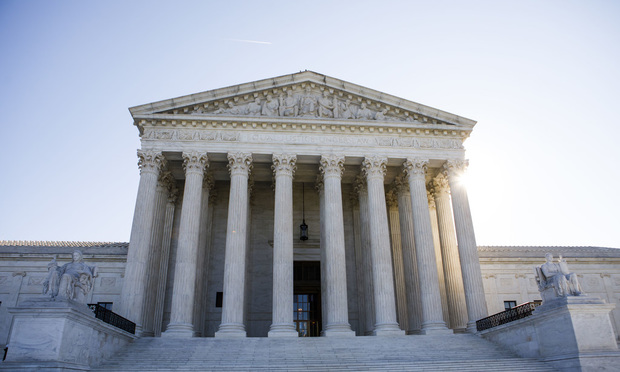“The Force, it's calling to you. Just let it in.”
Maz Kanata to Rey; Star Wars: The Force Awakens (2015)
In the latest “Star Wars” movie, we learn yet again that the Force, or the ubiquitous power to do something unique or extraordinary, may lie within each of us, but it can take a cast of thousands of Storm Troopers, Resistance fighters, and Jedi warriors to help awaken that Force. By the same token, as human resource and benefit plan professionals, it’s your job to awaken the Force within your employees – the Force to take those sometimes extraordinary steps to live a healthier, more productive and even happier life.
So how do plan sponsors meet that challenge? That’s the question that is keeping many employers up at night, according to a 2015 survey from the Midwest Business Group on Health (MBGH). Employee engagement – or lack thereof – seems to be a ubiquitous challenge. In the MBGH survey, 81 percent of employer members said they were seeking better ways to increase employee engagement in their health improvement programs.1
So why does population engagement seem elusive to so many groups? Here are seven criteria to consider when structuring your programs to awaken the Force within your employees and drive greater engagement in your wellness plan.

1. Manage Your Corporate Culture
In Star Wars movies, “Force” abilities can be attained through intense willpower, resolve, conviction, discipline, focus, and attention, and become easier with time, belief, commitment, and practice. Sound familiar? These are the same characteristics it takes to change poor, lifelong health choices. For most people who don’t live life according to a Hollywood script, finding that Force within us to live a healthier, fitter lifestyle requires constant reinforcement.
For employers, the single most important variable impacting your ability to awaken your employees “Force” is your corporate culture. Who you are as a company isn’t just about what widget you make or what service you offer. It’s about your values, your environment, your corporate persona – your culture. A healthy, supportive culture enables and embodies healthier employees.
Wellness experts have been talking about the value of instilling a “culture of health” for more than two decades. And, within those organizations which have been practicing and evolving this concept consistently, you will find that wellness participation has become second nature to most employees. Wellness has taken over as a “way of being,” evoking an intrinsic motivation to embrace health as a core value.
How did these organizations achieve this “nirvana” of wellness culture? Research has defined specific criteria that allow organizations to measure progress toward achieving a culture of health. The HERO Employee Health Management Best Practices Scorecard is an industry-leading tool used to evaluate and benchmark six domains of an organizations wellness initiative, including organizational support.
Areas influencing an organizations culture include leadership support, employee involvement, a supportive environment (onsite programs, access to healthy foods, flex schedules, etc.), health policies, availability of programs and resources to support health improvement, a short- and long-term strategic plan, and incentives. The Scorecard bench-markings show that companies with a greater degree of organizational support have higher wellness program participation rates and greater success in managing health trends and cost spend.2
In other words, a properly cultivated and evolved culture of wellness immerses employees in an environment that reflects, inspires, and even rewards an attitude towards healthful living. It becomes a community of people all contributing toward the same cause. In the absence of an all-encompassing, long-term, health-focused culture, a wellness program can feel like, well, the Dark Side: Just another corporate demand on an already stressed-out workforce.

2. Obtain Educated Buy-In
Few corporate wellness programs can be successful without first obtaining heartfelt buy-in from employees. All the more reason to take to heart what Yoda, the former Jedi master once said: “Do or do not. There is no try.” Employers must be willing to do what it takes to obtain buy-in from employees. That means getting face-to-face with employees to educate them and understand what is important to them.
Do this by demonstrating how employee risk factors impact health premiums, absenteeism and presenteeism, and then reinforcing employee education and information with ongoing analytics that illustrate how changes over time are improving lives and other bottom line factors that are important to employees and the company. Properly educated employees will come away understanding how their behaviors will influence their own personal “pocketbook,” as well as how their behavior impacts business costs, company growth, and profits.
Wellness Champion networks are a “boots-on-the-ground” approach to educating all employees. These networks demonstrate organizational commitment to wellness; providing an avenue for front-line employees who are passionate about wellness, to educate their peers about the program, rally engagement, and collect feedback on what their fellow colleagues want in a program. Champion networks will assist in keeping all employees invested in your program and more willing to take steps to demonstrate their “buy-in.”
3. Quantify the Risk
“Your eyes can deceive you. Don’t trust them,” Obi-Wan Kenobi once said to the young Luke Skywalker. That’s a good health lesson for employees, too. Individuals cannot judge their own health risks just by looking in the mirror, but employers can help them better understand their health risks by offering free health risk assessments or biometric screenings.
These screenings can serve as an intervention point to alert employees to health risks they may be unaware of, thereby better engaging them in their health. They also can serve as a benchmark, planning tool or an annual health improvement assessment tool. When used in combination with a wellness scorecard, automated health reminders, wellness challenges, or other communications that recommend health improvement actions, employees can remain more engaged in reducing their health risks.
A growing body of evidence also suggests that these techniques, used in concert with telephonic or electronic personal health coaching, are more successful in motivating individuals to set and achieve goals, leading to a greater overall reduction in health risks.![]()
4. Incentivize to Get the Big Payoff
The big payoff at the end of most every Star Wars movie is, ultimately, the defeat of the Dark Side, whether accomplished by blowing up a Death Star or returning a fallen lightsaber to its rightful owner. Similarly, wellness programs are seeking that same kind of big payoff: Overcoming the “Dark Side” of human nature that resists change. To help overcome that resistance, employees must be motivated, inspired, or encouraged. Extrinsic motivators, such as incentives, are usually necessary for initial engagement and employee buy-in.
Programs that include explicit health promoting incentives, particularly financial, have proven to influence employees’ initial decisions to become familiar with and start to participate in a health improvement program. Properly designed, incentives will help employees take responsibility for the behaviors which increase their health risks. In many cases, employee success with early efforts can produce an intrinsic desire to continue, regardless of whether the incentive is continued.
A properly strategized and communicated program, with an incentive initiative that resonates with employees, can save company’s thousands of dollars per member, as demonstrated by a multitude of business and organizational case studies across the nation during the last decade. 3
Recognition of the valuable role incentives play in wellness programs led to changes in the Affordable Care Act, increasing the maximum permissible reward for health-contingent programs from 20 percent to 30 percent of the cost of individual health coverage, and up to 50 percent for programs designed to prevent or reduce tobacco use.
How you choose to incentivize your employees is up to you. Just remember, the big payoff probably won’t happen without the right motivation.

5. Consider a Multi-Tier, Yet Simple, Incentive Plan
“Always in motion is the future,” Yoda said. And always in motion is the future of your wellness plan. As such, employers and wellness vendors continue to tweak their programs or research new program designs to enhance engagement. If your current incentive plan is seeing declining or stagnant results, perhaps it’s time to try something different.
Recent research suggests, for example, that a simple multiple-tier incentive designs may have more favorable outcomes than a single tier approach. In a study recently published online by Population Health Management Journal,4 two incentive designs for achieving step goals were evaluated. During 2011, employees who reached a goal of 500,000 steps per quarter were rewarded with a financial incentive. The prevalence of participants in the step program was 64.7 percent. By comparison, in 2012 a three-tier step goal plan was implemented, incorporating a flexible design where employees could be rewarded for reaching 400,000, 650,000, or 900,000 steps per quarter.
The participation in the tiered program increased to 72.8 percent in 2012. In addition, the percentage of employees who reached at least 1 quarterly incentive increased from 36.3 percent in 2011 to 51.4 percent in 2012. The average steps per day were higher in 2012 compared to the same employees in 2011. The findings suggest that a tiered incentive design, focusing on one goal (physical activity in this case) may be an effective approach to further enhance employee engagement in physical activity.
6. Offer Alternatives and Accommodations So All Can Participate
In Star Wars: The Force Awakens, Han Solo is asked, “Is that possible?” To which he replies, “I never ask that question until after I’ve done it.” Not only is it a good idea and possible today to offer alternative wellness plan options to accommodate all needs, but it’s the law. Wellness programs must provide reasonable accommodations for individuals whose health status may not enable participation.
It is important to obtain appropriate legal advice about what constitutes special needs, how those needs are documented, and what accommodations are available and reasonable in the context of the wellness program expectations. An example of an accommodation is enabling a person to take a series of online health improvement classes or make a visit to their medical doctor to earn an incentive, in lieu of completing a designated physical activity or meeting certain biometric outcome measures.

7. Lead By Example
Everyone needs an Obi-Wan Kenobi, a Yoda, or a Rey to lead the charge, impart wisdom, or set an example for how we learn to use the Force within us. Executives, benefits managers, and wellness champions are the Yodas of your group. Make sure they are front and center in wellness discussions, challenges and other activities, leading by example. Employee testimonials are also powerful tools: Inspiring and encouraging others to reach deep inside themselves to discover and nurture that willingness to be part of the employee community striving to reach a new level of health awareness.
The opportunities to ensure greater engagement truly are tremendous. Follow these seven steps to find the healthier, more engaged Force within your employee group.
About the Author
As Senior Vice President of Healthyroads Program Solutions and Client Strategy, Debi Heck works with employer groups, health plans, brokers, consultants and other clients to support their wellness program implementation and long-term health management strategies. She has more than 25 years of health management, wellness, and preventive health care experience, serving in leadership positions in some of the nation’s leading population health consulting and management organizations. You can reach Debi at [email protected]
About Healthyroads
The Healthyroads® population health program is one of the nation's largest, serving millions of members and hundreds of employer groups and health plans across the country. Healthyroads is a product of American Specialty Health Incorporated (ASH), one of the nation’s premier independent and privately-owned specialty health services organizations.
1 http://www.plansponsor.com/Employers-Focused-on-Increasing-Engagement-in-Wellness/
2 http://hero-health.org/wp-content/uploads/2014/11/2014_Scorecard_Annual_report.pdf
4 http://online.liebertpub.com/doi/pdfplus/10.1089/pop.2015.0030
© 2025 ALM Global, LLC, All Rights Reserved. Request academic re-use from www.copyright.com. All other uses, submit a request to [email protected]. For more information visit Asset & Logo Licensing.







